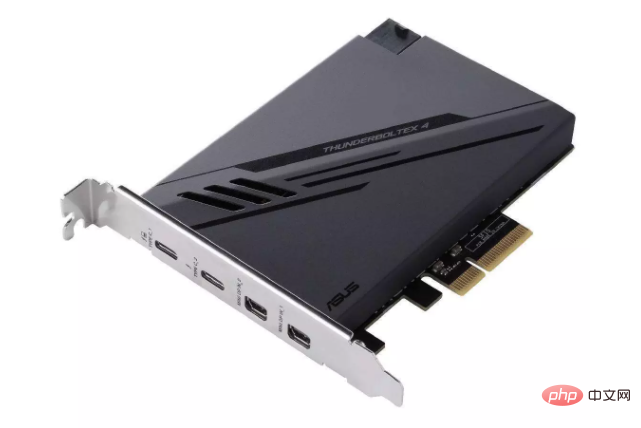
The expansion card in the microcomputer is the interface between the "system bus and peripherals". An expansion card is a printed circuit board that plugs into an electrical connector or expansion slot on a computer motherboard, also called a riser card; an expansion card allows the functionality and interfaces of a computer system to be expanded or supplemented in a manner suitable for the tasks it will perform. Expansion cards can usually be installed or removed in the field, allowing the user a degree of customization for specific purposes.

The operating environment of this tutorial: Windows 7 system, Dell G3 computer.
The expansion card in the microcomputer is the interface between the "system bus and peripherals".
In computing, an expansion card (also called an expansion board, adapter card, or accessory card) plugs into an electrical connector or expansion slot (also called a bus slot) on a computer's motherboard Printed circuit boards used to add functionality to computer systems. Sometimes the design of computer cases and motherboards involves placing most (or all) of these slots onto separate removable cards. Typically, such cards are called riser cards, in part because they protrude upward from the motherboard and allow expansion cards to be placed above and parallel to the motherboard.
Expansion cards allow the functionality and interfaces of a computer system to be expanded or supplemented in a manner suitable for the tasks it will perform. For example, a high-speed multi-channel data acquisition system would be useless in a personal computer used for bookkeeping, but might be a critical part of a system used for industrial process control. Expansion cards can usually be installed or removed in the field, allowing the user a degree of customization for specific purposes. Some expansion cards take the form of "daughter boards" that plug into connectors on the supporting system board.
Application of expansion card
The main purpose of the expansion card is to provide or expand functions not provided by the motherboard. For example, the original IBM PC had no onboard graphics or hard drive capabilities. In this case, the graphics card and ST-506 hard disk controller card provide the graphics functionality and hard disk interface respectively. Some single-board computers do not offer expansion cards and may only provide IC sockets on the board for limited changes or customization. Due to the relatively high cost of reliable multi-pin connectors, some mass market systems such as home computers do not have expansion slots and instead use a card edge connector on the edge of the motherboard, putting expensive mating sockets into the cost of peripherals.
With onboard capacity expansion, the motherboard can provide a single serial RS232 port or Ethernet port. Expansion cards can be installed to provide multiple RS232 ports or multiple and higher bandwidth Ethernet ports. In this case, the motherboard provides basic functionality, but the expansion cards provide additional or enhanced ports.

For more related knowledge, please visit the FAQ column!
The above is the detailed content of What is the interface between expansion cards in microcomputers?. For more information, please follow other related articles on the PHP Chinese website!
 Computer Languages
Computer Languages
 Computer application areas
Computer application areas
 What is the encoding used inside a computer to process data and instructions?
What is the encoding used inside a computer to process data and instructions?
 The main reason why computers use binary
The main reason why computers use binary
 What are the main characteristics of computers?
What are the main characteristics of computers?
 What are the basic components of a computer?
What are the basic components of a computer?
 What keys do arrows refer to in computers?
What keys do arrows refer to in computers?
 How to recover browser history on computer
How to recover browser history on computer